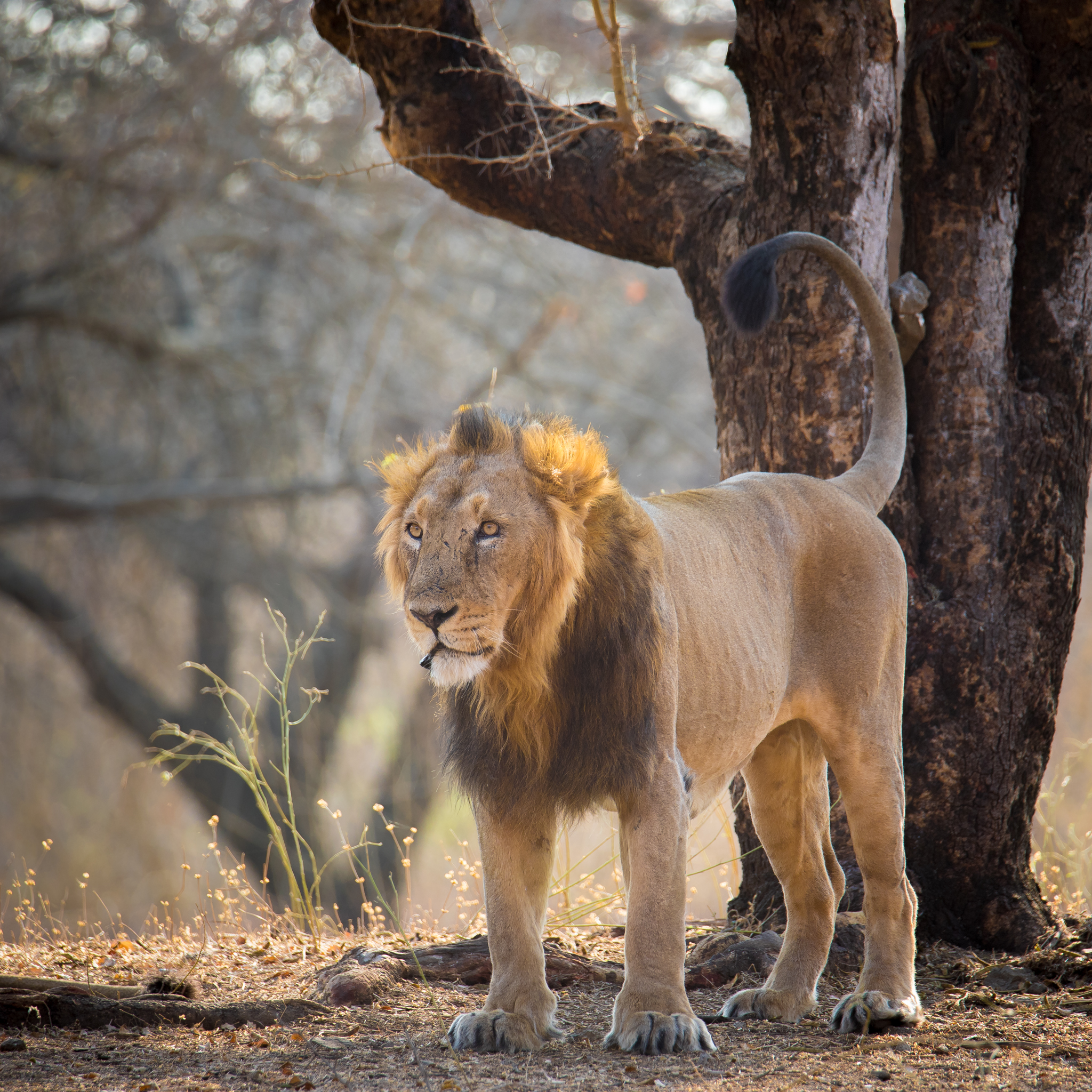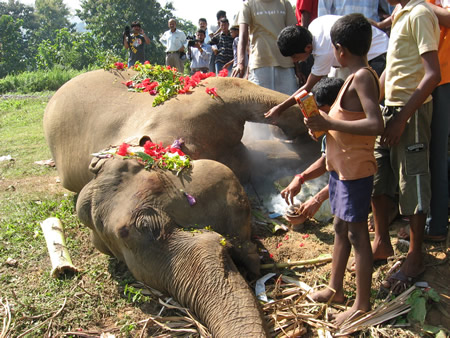Our verdant forests have always been known to be the thriving ground for exotic flora and fauna. And sometimes these elusive fauna are better seen when captured unawares, albeit on a camera.
The Tirumala Tirupati Devasthanam (TTD), the busiest temple shrine in the world, installed infrared cameras in the Tirumala hills in Seshachalam biosphere; known for its unique flora and fauna, exclusive to this habitat. The results of the camera traps revealed recently show some of the rare and endangered wildlife thriving in the region.
Also Read: Mouse Deer Population Bounces Back
Seshachalam hill ranges of the Eastern Ghats in Chittoor and Cuddapah districts of southern Andhra Pradesh. The hilly terrain is rugged and picturesque with gorges, steep slopes, plateaus and valleys. The town of Tirupati is one of the most ancient and sacred pilgrimage spots in India. The hill near the temple is called ‘Tirumala’ or the “sacred hill”.
The photographs recorded on these camera traps included the four-horned antelope (Konda Gorre), Asian palm civet (Punugu pilli), Indian wild dog (Adavi Kukka), Grey jungle fowl (Adivi kodi), leopard (Chirutha), mongoose (mungisa), mouse deer (Mooshika Jinka), porcupine (Mullapandhi), sambar (Kanithi) and sloth bear (Elugubanti).
More on these species
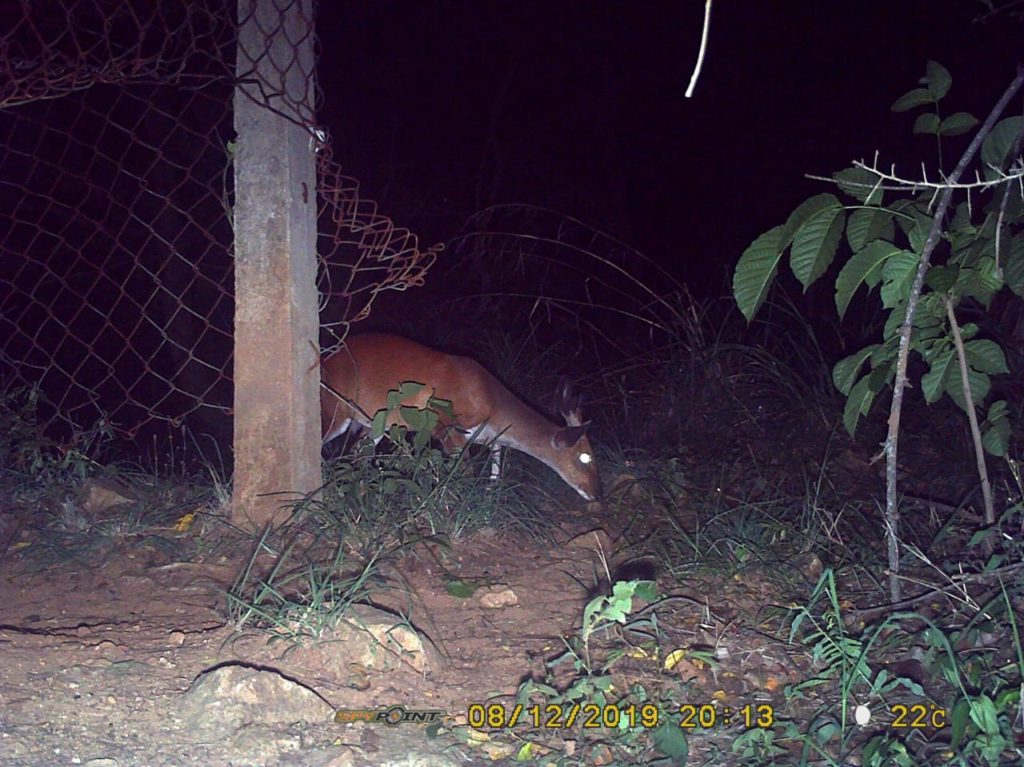
Four-horned Antelope
The four-horned antelope is a small antelope found in India and Nepal. It is the sole member of the genus Tetracerus of the family Bovidae. It faces threat to its existence due to loss of habitat and due to its four-horned head being sort after by trophy hunters. It is classified as Vulnerable by IUCN.
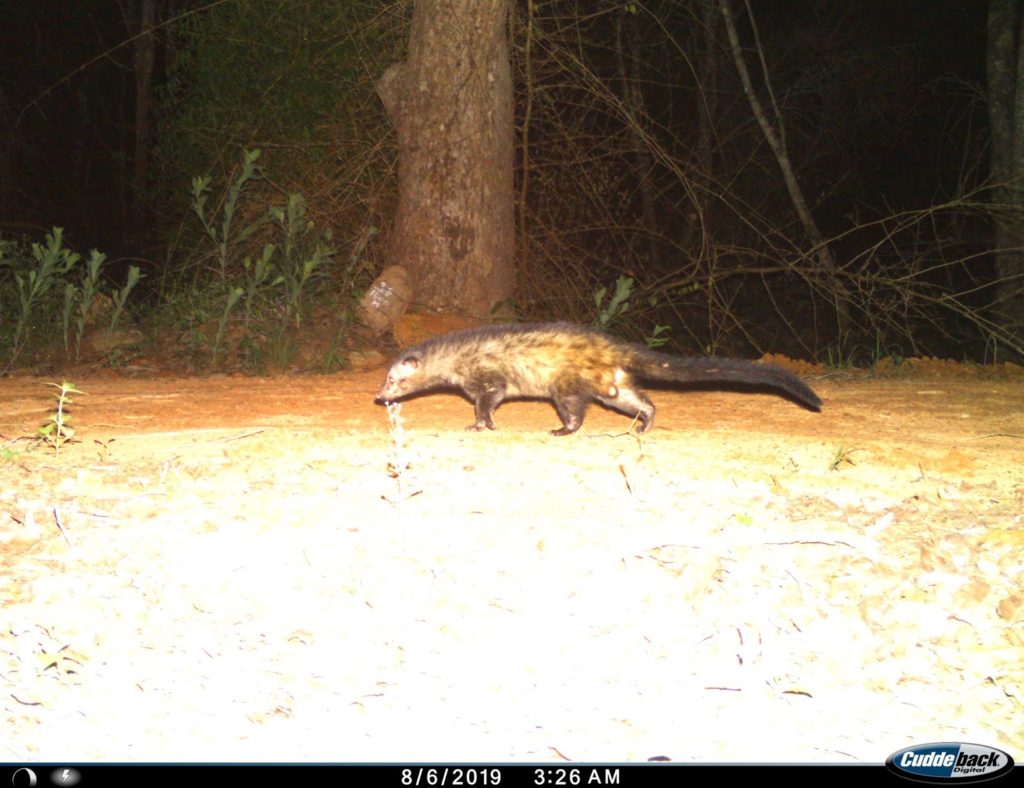
Asian Palm Civet
This species (Paradoxurus hermaphroditus) is found in South and Southeast Asia. Currently it is found in large numbers. However, it is threatened by poaching and illegal wildlife trade. Coffee beans ingested by the civet cat is used for making kopi luwak, which is one of the most expensive coffee brews, and hence these mammals are in high demand.
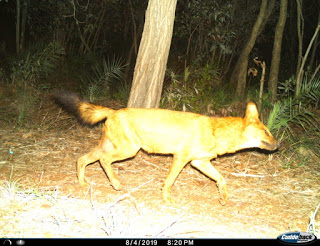
Indian Wild Dog
It is also called dhole and resembles the African wild dog, but has its own distinct features. It is highly adaptable and found largely in the wild. Loss of habitat has rendered it an endangered species.
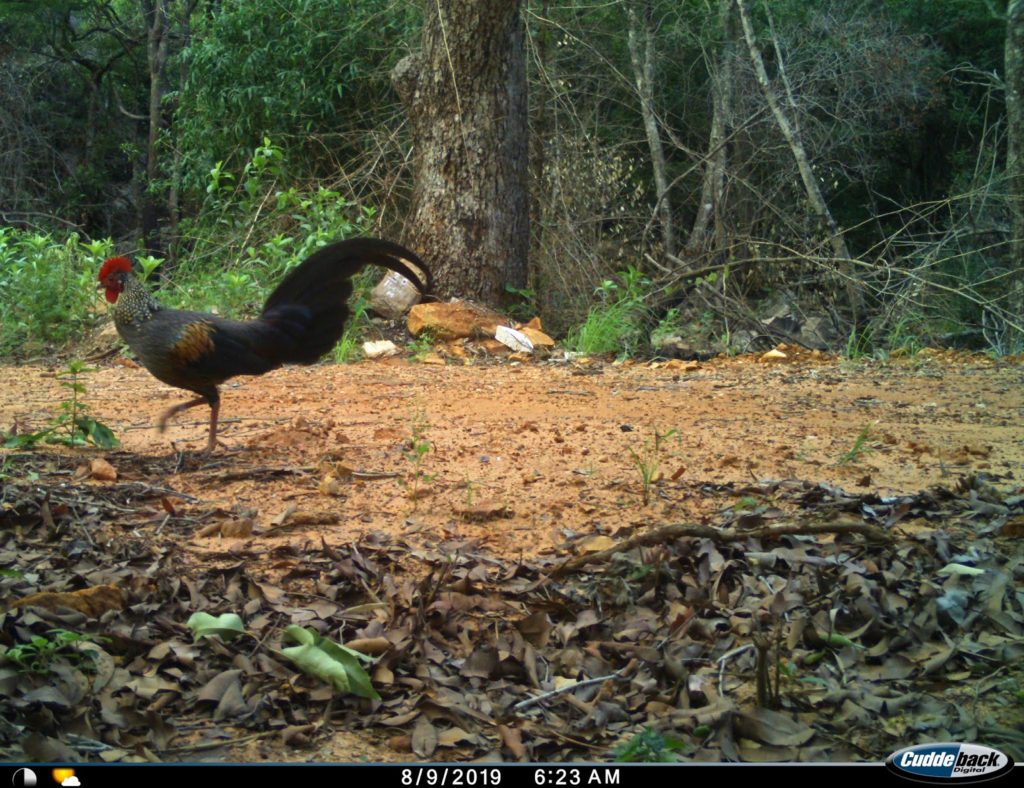
Grey Jungle Fowl
This species is endemic to India and is one of the wild ancestors of domestic fowl. Found in the wild and also known to hybridize in captivity, they are a very attractive species whose meat is used for food and feathers are used to make fishing lures. Though it is found in abundance, the population is believed to be decreasing.
Also Read: Male Leopard Spotted at Yamuna Biodiversity Park

Leopard
The leopard is found in Africa and Asia and is listed as Vulnerable in the IUCN Redlist. Their population is decreasing due to habitat loss and are known to frequently have been spotted in human inhabitations adjoining forests.

Mongoose
It is a small carnivore found almost all over the Indian subcontinent and is a species of least concern.
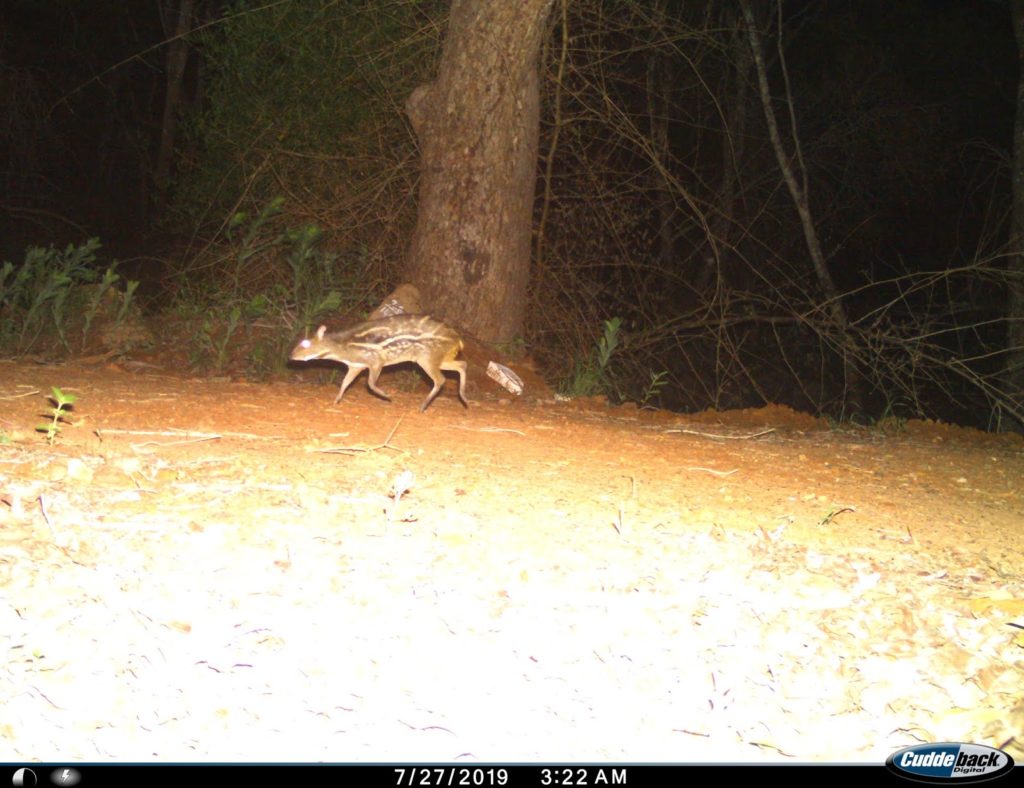
Mouse Deer
The Indian Spotted Chevrotain is a small nocturnal animal which is rarely sighted and hence the images of this species are very precious. Though it is not spotted often, it is believed to be a species of least concern.
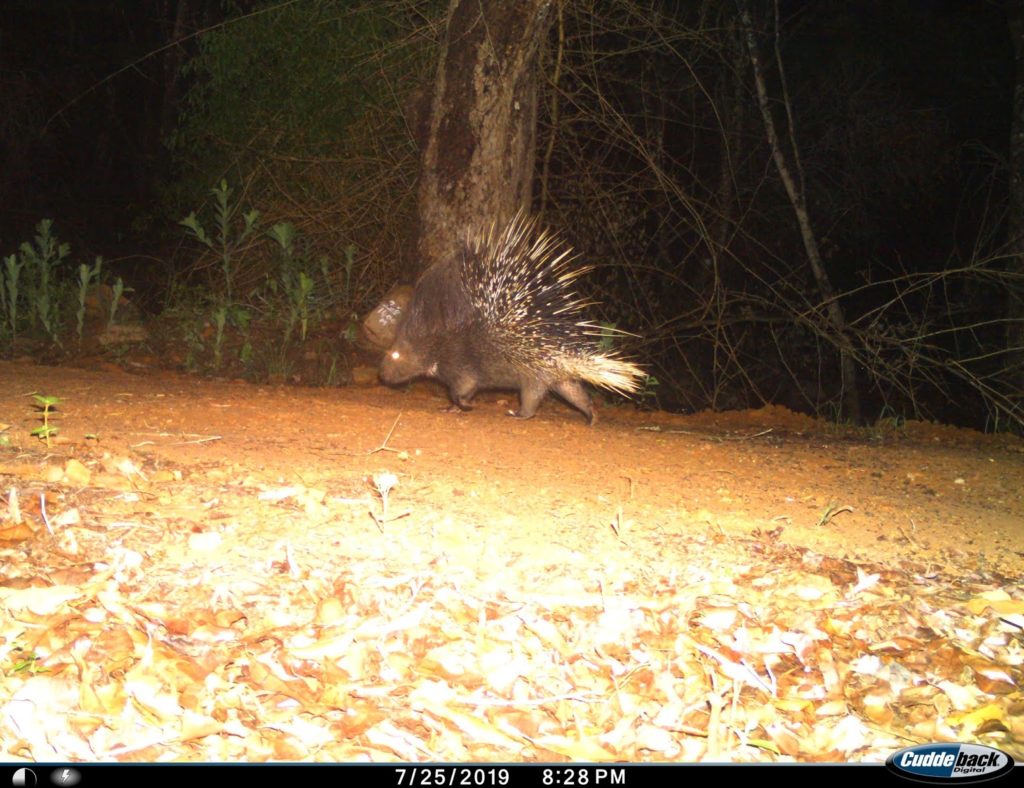
Porcupine
Porcupines are largely nocturnal species found across Africa and Asia. It uses the pointed needles or quills as defence mechanism. Images of the species in the wild are a treasure.
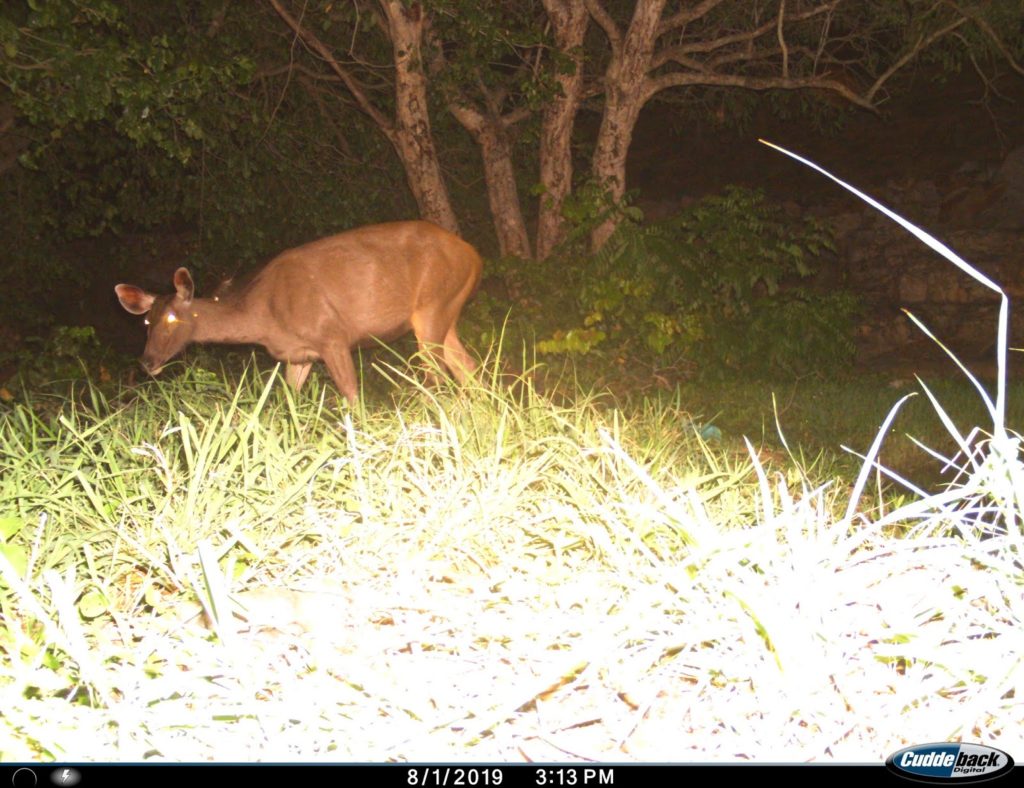
Sambar
Sambar deer is a species found in parts of India and certain parts of Asia. It is listed as Vulnerable on the IUCN redlist and the species population has been steadily decreasing due to hunting and habitat loss.

Sloth Bear
This species, also known as ‘Bhaloo’ which is the stuff of many Indian tales including the famous Jungle Book by Rudyard Kipling is listed as Vulnerable on the IUCN redlist due to habitat loss and degradation.
The camera traps have been placed at various places in the vicinity of Tirumala hills such as Parveta Mandapam, Srigandha Vanam (sandalwood garden), and Kumaradhara Pasupudhara dam road, Dharmagiri, Papavinasanam and the forest border lines.
Also Read: Sloth Bears Get More Protection in Madhya Pradesh
“These cameras identify the animals through long distance sensors and photograph them both during day and night times,” says Divisional Forest Officer D. Phanikumar Naidu.
About 2700 hectares of the Seshachalam forest (all of 82500 hectares) in and around the Tirumala temple is controlled by the TTD. It has engaged in afforestation to maintain the green cover as a step towards protecting the wildlife in the region.
The TTD has also put up sign and display boards to enlighten the pilgrims on walking paths of Tirumala in the areas of movements of the animals. Construction of water tanks and other protective measures in the forest belt are also being planned to take care of the needs of wild animals.
Images courtesy RSPNetwork


